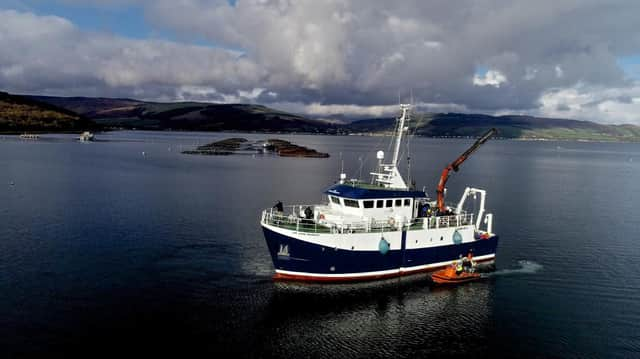Fish farms to face more sea lice control measures


Under the changes, a number of dedicated “protection zones” will be introduced, including around the Western Isles, as well as a lower threshold on acceptable levels of sea lice present at any production site.
Protecting Scotland’s wild Atlantic salmon has been designated as “a national priority” and comes under the jurisdiction of the Scottish Environmental Protection Agency.
Advertisement
Hide AdAdvertisement
Hide AdThe proposals come after consultation with scientists and on the back of a report which stated that 60 per cent of salmon rivers across Scotland were in poor conservation status.
SEPA chief executive Terry A’Hearn said: “Scotland is renowned worldwide for the quality of its rivers, lochs and seas. Despite this, in nearly 60 per cent of salmon rivers across Scotland, including on the West Coast and Western Isles, salmon populations are in poor conservation status.
“Whilst the causes of the poor conservation status of wild salmon stocks are complex and believed to be due to a range of different factors rather than a single cause, we know that sea lice from marine finfish farms can be a significant hazard.”
Other than sea lice the Scottish Government identified another 11 high-level pressures on salmon stocks, including loss of river habitats, man-made barriers to fish migration, impacts on river levels resulting from climate change, recreational fishing and commercial sea fisheries, predation, escapes, and invasive non-native species, including signal crayfish.
Advertisement
Hide AdAdvertisement
Hide Ad“The protection of Scotland’s wild Atlantic salmon is a national priority which is why, following the Scottish Government confirming SEPA as the lead body responsible for managing the risk to wild salmonids from sea lice from marine finfish farms, and in line with stated priorities, we’ve launching a consultation on ambitious proposals for proposed wild salmon protection zones and a sea lice exposure threshold that applies in these zones,” said Mr O’ Hearn.
“We believe the proposals are practical and outcome focused, with phased implementation. Over the coming months we look forward to meeting and hearing views from a broad range of stakeholders with an interest in wild salmon, from community and environmental groups to the aquaculture sector itself before taking a final view in 2022.”
Scotland is the third largest produced of farmed salmon in the world - behind Norway and Chie - and is the country's top food export. In the Western Isles it supports a workforce of around 550 full time equivalent jobs.